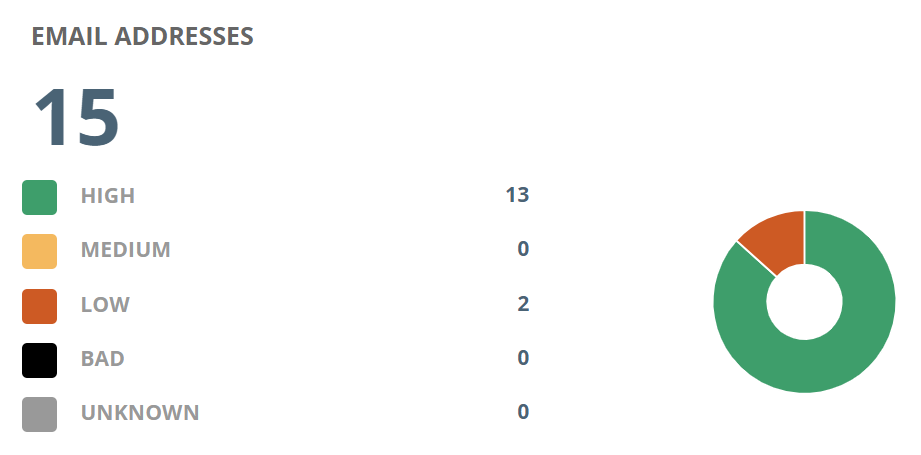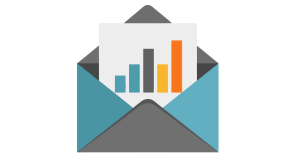We like to talk a lot about list verification and cleansing in the email marketing industry. It’s one of those marketing best practices that can make a real difference to your deliverability, campaign engagement, and return on investment. But talk is cheap. How many of us are actually doing it?
While many email marketers understand the importance of list verification and cleansing, they also see it as a chore. It’s like painting your bathroom ceiling or tidying your garage, there’s always something better to do. If only there were a simple tool that could take this essential but, quite frankly, tedious task on. Enter the emfluence Marketing Platform’s list cleansing tool.
But before we get into how emfluence can help you keep your email lists fresh and healthy, let’s remind ourselves why this task is so important.
What’s the Point of Email List Verification and Cleansing?
A carefully verified and cleansed email list will help you to:
- Protect Your Sender Reputation: Email service providers monitor your sender reputation to determine whether to deliver your emails to a subscriber’s inbox or send them directly to the spam folder. Keeping your lists clean ensures that more of your emails will reach their intended destination. By removing invalid email addresses and hard bounces, you’ll protect your sender reputation and avoid being identified as a spammer.
- Optimize Your Engagement Rates: A clean and fully verified list directly contributes to better email engagement rates, as you’re only targeting active and interested subscribers. This strategy will lead to higher open rates, click-through rates, and conversions. In turn, this will signal to email service providers that your content is valuable, thereby improving the deliverability of future emails.
- Reduce Your Costs: Maintaining a clean email list can also help reduce costs. Many email marketing platforms charge based on the size of your subscriber list and/or number of sends. Removing inactive or invalid email addresses lowers your expenses and prevents potential penalties for poor sending practices.
- Reduce Your Spam Complaints: A clean list minimizes the risk of spam complaints and helps you avoid being blacklisted. If you regularly remove unengaged subscribers and invalid emails, you are less likely to be flagged as a spammer, keeping your email marketing efforts compliant with anti-spam regulations and best practices.
- Improve Your Understanding of Success: When you cleanse your email list, you not only improve the accuracy of your data but also empower yourself with better analysis of your email marketing campaigns. Accurate metrics like open rates, click-through rates, and conversions help you to make more informed decisions and refine your strategy for better performance.
- Reduce Your Hard and Soft Bounces: Regularly verifying your list helps you avoid hard and soft bounces, which can negatively impact your sender reputation. A low bounce rate tells email service providers that your emails target a genuine audience, enhancing your credibility as a sender.
- Improve Your Compliance With Global Regulations: Staying compliant with email marketing regulations, such as GDPR, CAN-SPAM, and CCPA, requires maintaining an accurate and up-to-date list. Regular email verification not only helps you comply with these regulations but also gives you the confidence that you manage subscriber consent properly and avoid legal issues.
- Reduce Your Risk of Subscriber Email Fatigue: Sending emails to uninterested or unengaged subscribers can lead to email fatigue, causing recipients to lose interest in your content or unsubscribe. Cleansing your list by removing inactive users helps you focus on delivering content to an audience that is more likely to engage with your messages.
- Improve Your Segmentation and Personalization Strategy: A clean list is essential for optimizing campaign performance, enabling better segmentation and personalization. Eliminating poor-quality email addresses will make your campaigns more targeted, leading to better engagement and higher conversion rates without skewing data with unresponsive contacts.
- Maximize Your ROI: Reaching the right audience is essential to maintaining a positive return on investment (ROI). A clean, engaged list is more likely to drive conversions. Regular verification also optimizes your performance metrics, leading to more effective campaigns and a higher ROI.
How Does emfluence’s List Validation and Cleansing Tool Work?
emfluence’s list validation and cleansing tool goes beyond just checking if an email is valid. It also verifies if the addresses are active, detects if they’re associated with spam traps, and flags potentially risky addresses.
Understanding Your List Cleanse Results
The results of your list cleanse in emfluence will be categorized into different score groups. Each will be presented in its own file alongside a summary report.

Here’s a rundown of what each score group means:
- High: These are reliable email addresses that are highly recommended for sending campaigns.
- Medium: These addresses are mostly good, especially for large domains, but they might face deliverability issues with smaller or private domains, including .edu and .gov addresses.
- Low: These addresses are more questionable, often associated with smaller domains or systems that are difficult to verify. Proceed with caution, as these addresses might have higher bounce rates.
- Unknown: Addresses that failed to process during verification. These should be treated with caution.
- Bad: These are addresses known to be invalid, dangerous, or likely to bounce. They should be avoided entirely.
Exploring Your List Cleanse Results
To review the results, you can filter and sort by score groups (High, Medium, Low, Bad, or Unknown) or use advanced filters. These include searching by email address, filtering by email status (e.g., blacklisted, hard bounce), and analyzing emails based on Score Trap Categories and Score Reason.

Score Trap Categories and Reasons Explained
Below are the key score reasons and what they signify:
Trap: An email address designed to catch spammers. Subcategories include:
- Mole: A hard-to-detect type of trap.
- Bot/Bit/Clickbot: An address exhibiting automated behavior.
- SNDS: A Hotmail/Outlook address known for reporting spam.
- Seed: An address set up to track email communications, sometimes including common typo traps.
Complaint: Recipients who dislike emails but aren’t taking major action.
- Screamer: Recipients who will report emails to the service provider.
- Litigator: Someone who might take legal action over unsolicited emails.
- XMission: Known for being extremely litigious.
High Risk: Includes role-based addresses like ‘abuse@’ and other potentially problematic patterns.
- Quarantine: Previously valid addresses that may no longer be reliable.
- Disposable/Temporary: Short-lived addresses, often created by spammers.
- Syntax/Formatting: Addresses with questionable structure or syntax errors.
- Domain Spelling: Common misspellings of major domains (e.g., ‘gnail.com’).
- Fake Data: Patterns typically associated with bots or fake sign-ups.
Taking Action Based on Your Results
emfluence automatically holds any addresses categorized as “Bad.” However, you should still review these results, along with the “Low” category, to determine if any addresses need further investigation.
To act on your results, you can use the filters and selection tools above the cleanse results to choose a category, such as “Bad” or specific “Trap” types, and take appropriate action. The minimum recommended actions are:
- Hold or Suppress any contacts in the “Bad” category.
- Suppress all “Trap” related categories to avoid potential deliverability issues.
- Use caution with the “Low” and “Unknown” categories due to their higher bounce rates, particularly if they belong to lesser-known domains or appear to be secondary addresses.
Learn More
Are you ready to take your email marketing to the next level? To learn more about emfluence’s list verification and cleansing tool or to schedule a demonstration of our complete marketing automation platform, contact the email marketing experts at expert@emfluence.com.


